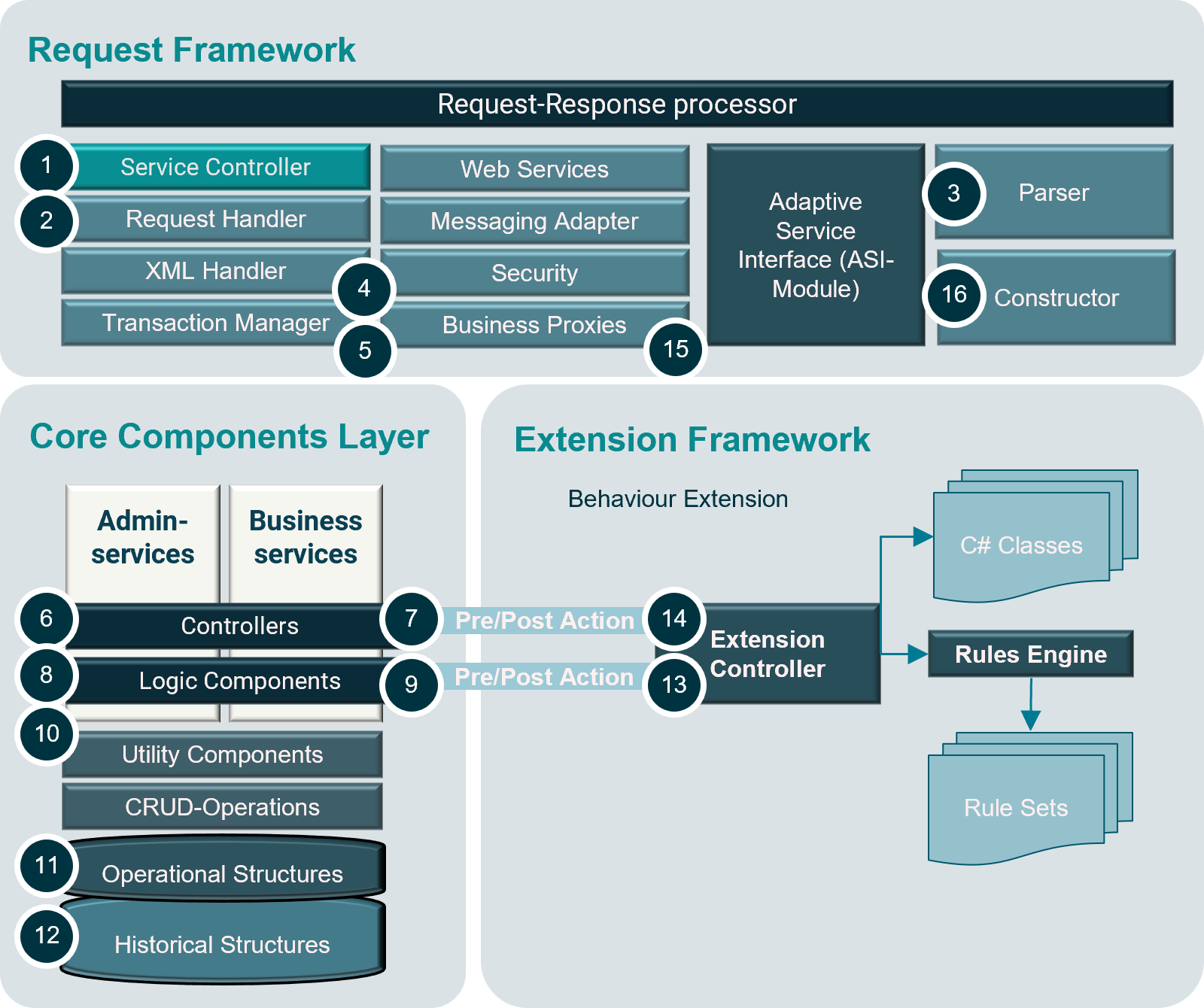Component Interactions
The diagram illustrates the process of handling a transaction within the Open Cloud MDM framework, highlighting the interplay among various components.

The steps of this interaction are as follows:
- Service Controller Reception: A request from an Open Cloud MDM consumer is received by the service controller.
- Request Handling: The request is then delegated to the Request Handler, which obtains a parser from a factory setup.
- Parsing Request: This step involves parsing the request into business objects, either through a pluggable parser or by transforming the request into a business object using ASI mapping.
- Security Authorization: The security component is utilized to authorize the transaction.
- Business Transaction Management: The Business Transaction Manager (BTM) acquires a business proxy that is equipped to handle the request.
- Business Proxy Invocation: The business proxy proceeds to invoke a method on the required controller component.
- Controller Component Preprocessing: The controller component undertakes preprocessing tasks, including invoking the external validation engine for data validation and executing any "pre-transaction" extensions via the extension controller.
- Business Logic Invocation: The controller component calls upon the required business logic component methods.
- Business Logic Preprocessing: This involves the business logic component invoking the extension controller to execute any "pre-action" extensions.
- Executing Business Logic: The business logic component runs the core business logic, which includes the execution of externalized business logic by the external business rules component.
- Data Persistence: The business logic component interacts with the persistency layer to ensure data is stored in the database.
- Database Triggering: Triggers within the database are activated to create historical data records.
- Business Logic Post-Processing: This step includes the business logic component invoking the extension controller to execute any post-action extensions.
- Controller Component Post-Processing: Control returns to the controller component, which might call other business logic component methods. Post-processing tasks are undertaken, including running post-transaction extensions via the extension controller and engaging the Transaction Audit Information Log component for transaction auditing.
- Return to Business Proxy: The control goes back to the business proxy, which may initiate additional Open Cloud MDM transactions using controller component methods.
- Final Response Handling: Control is returned to the request handler. Depending on whether ASI mapping is utilized, business objects are either transformed into a response XML message or de-serialized into XML by the pluggable response constructor. The final response is then dispatched back to the Open Cloud MDM consumer.
About OCMA - Open Cloud MDM Alliance
OCMA is an innovative collaboration among a diverse array of pioneering companies and customer-focused software vendors. Their collective mission is to establish the 'Hub and Dock Open Industry Standard for Master Data Management (MDM)'.
About HubDock
HubDock, as the legal entity representing the ecosystem and maintaining the platform, is integral to OCMA. It leads the essential initiative, 'Hub and Dock Open Cloud MDM'.
This stakeholder-driven ecosystem liberates businesses from the complexities of traditional business software, offering seamless integration, data consistency, and community-driven innovation to empower companies in the digital age.